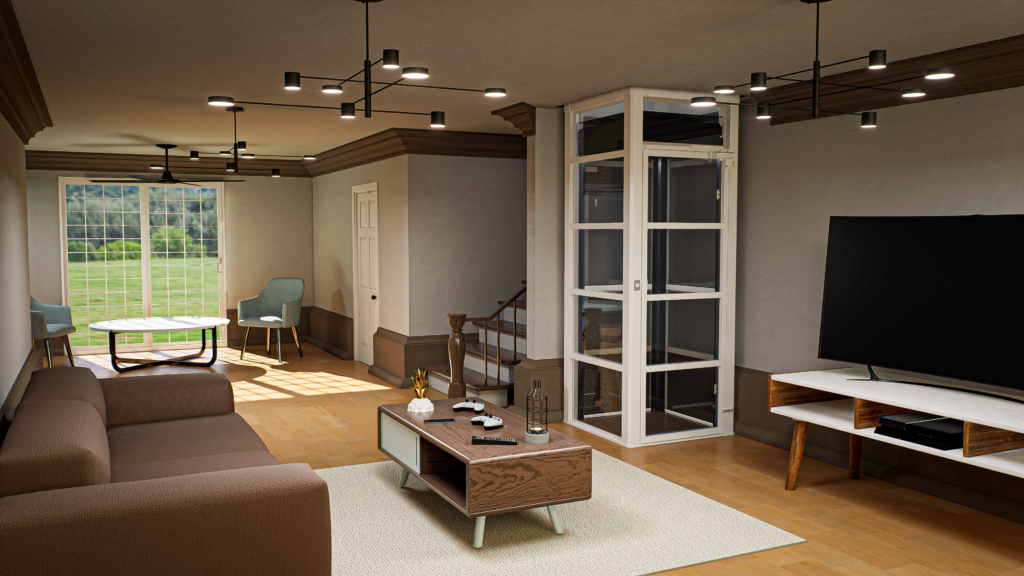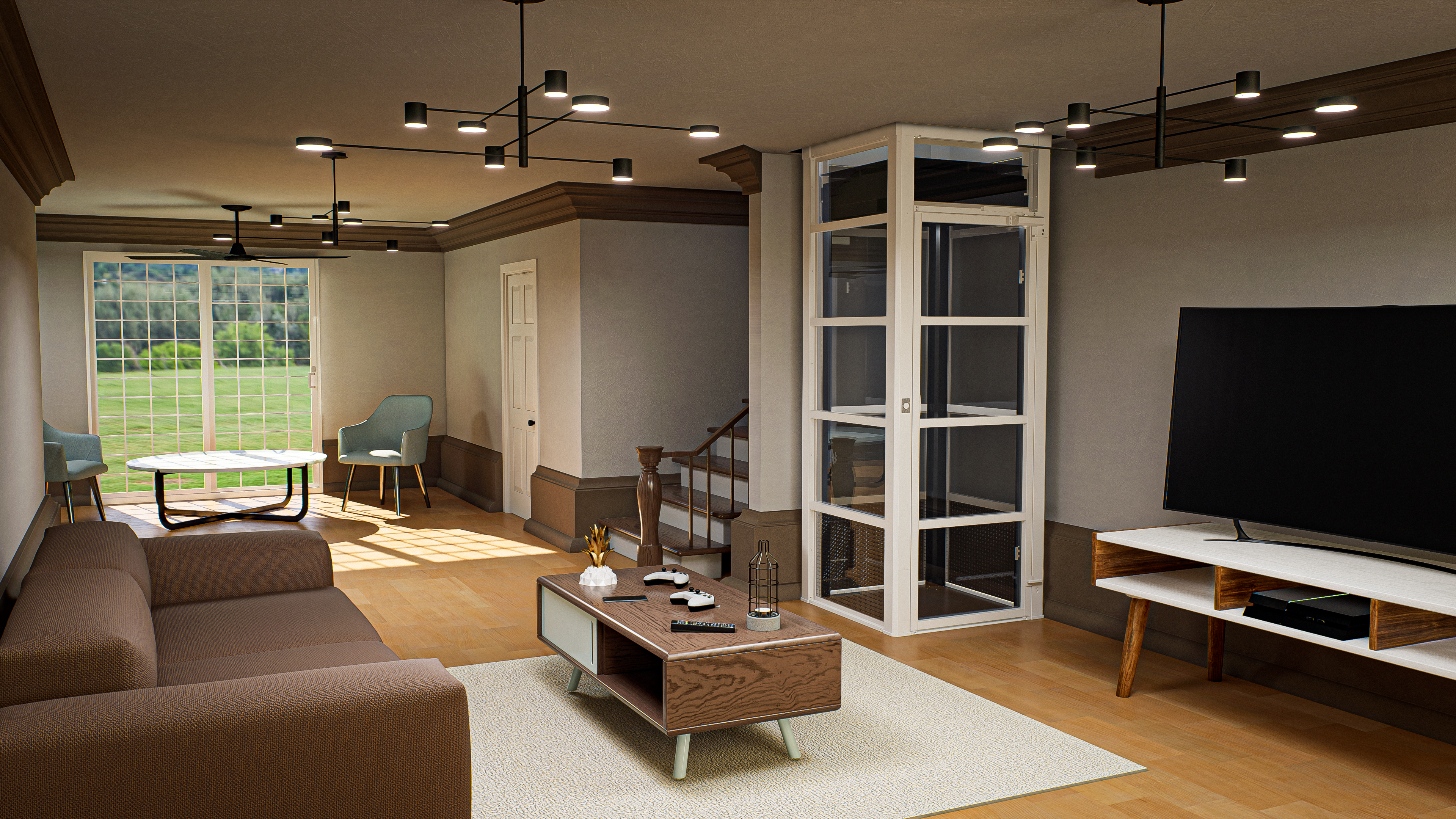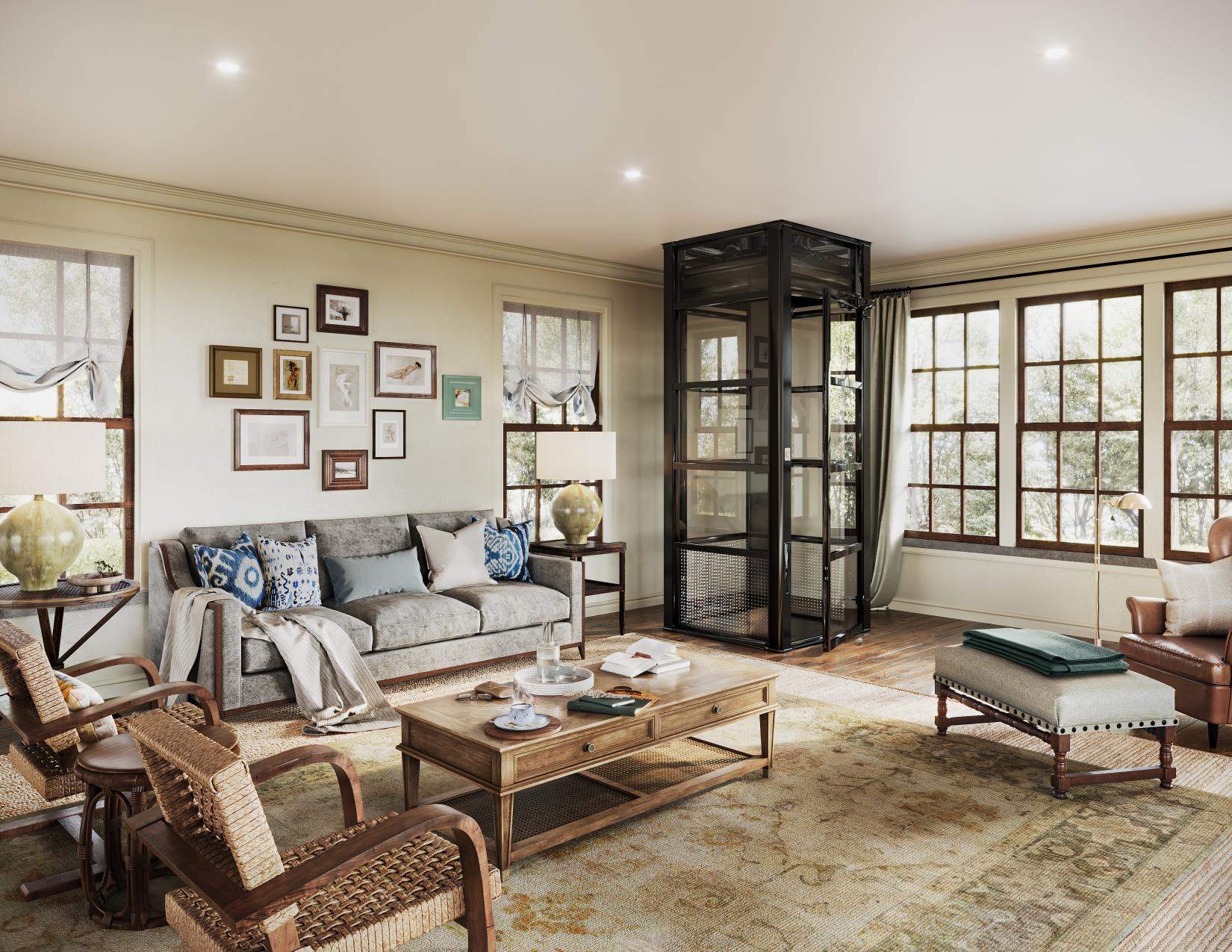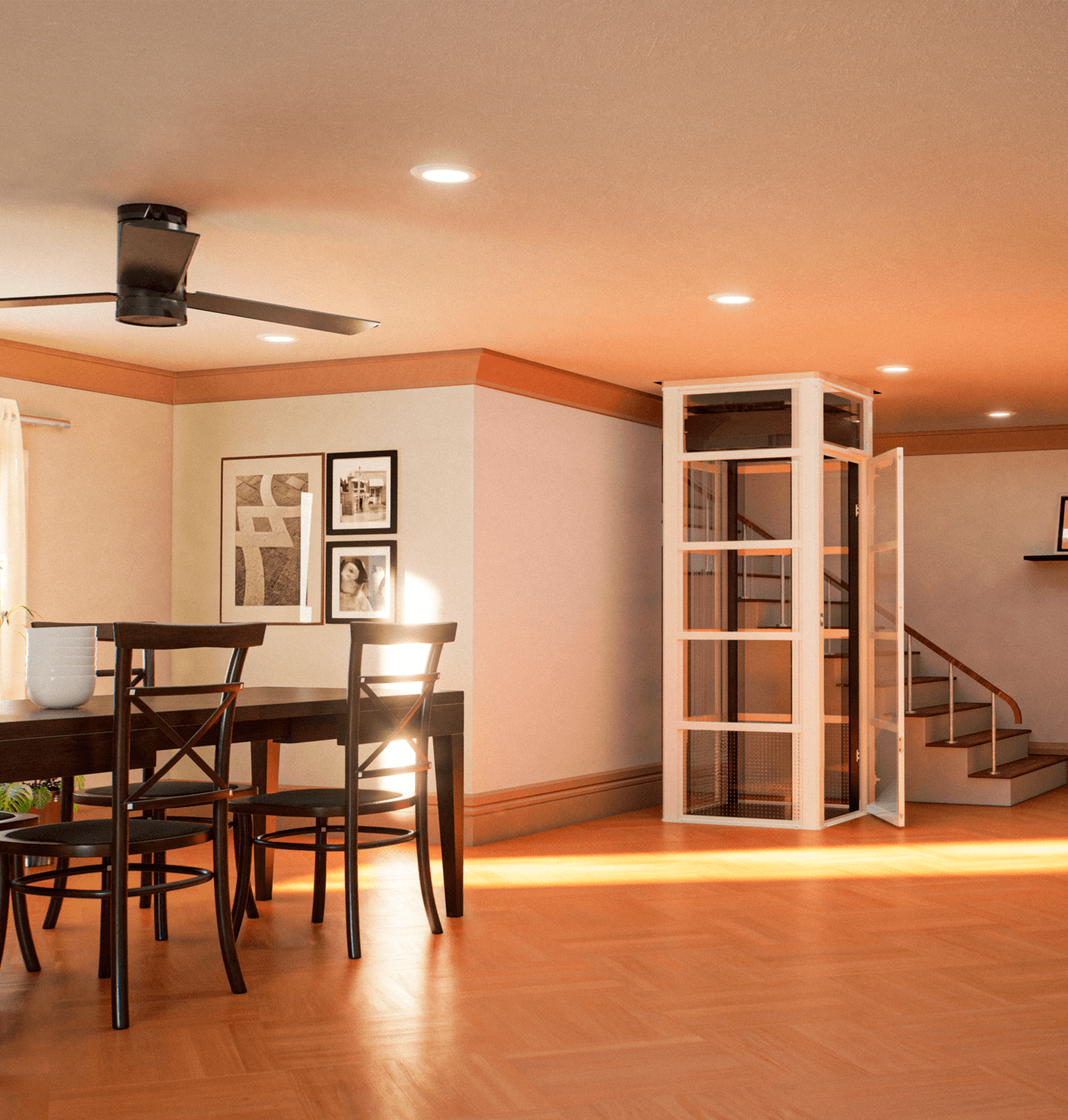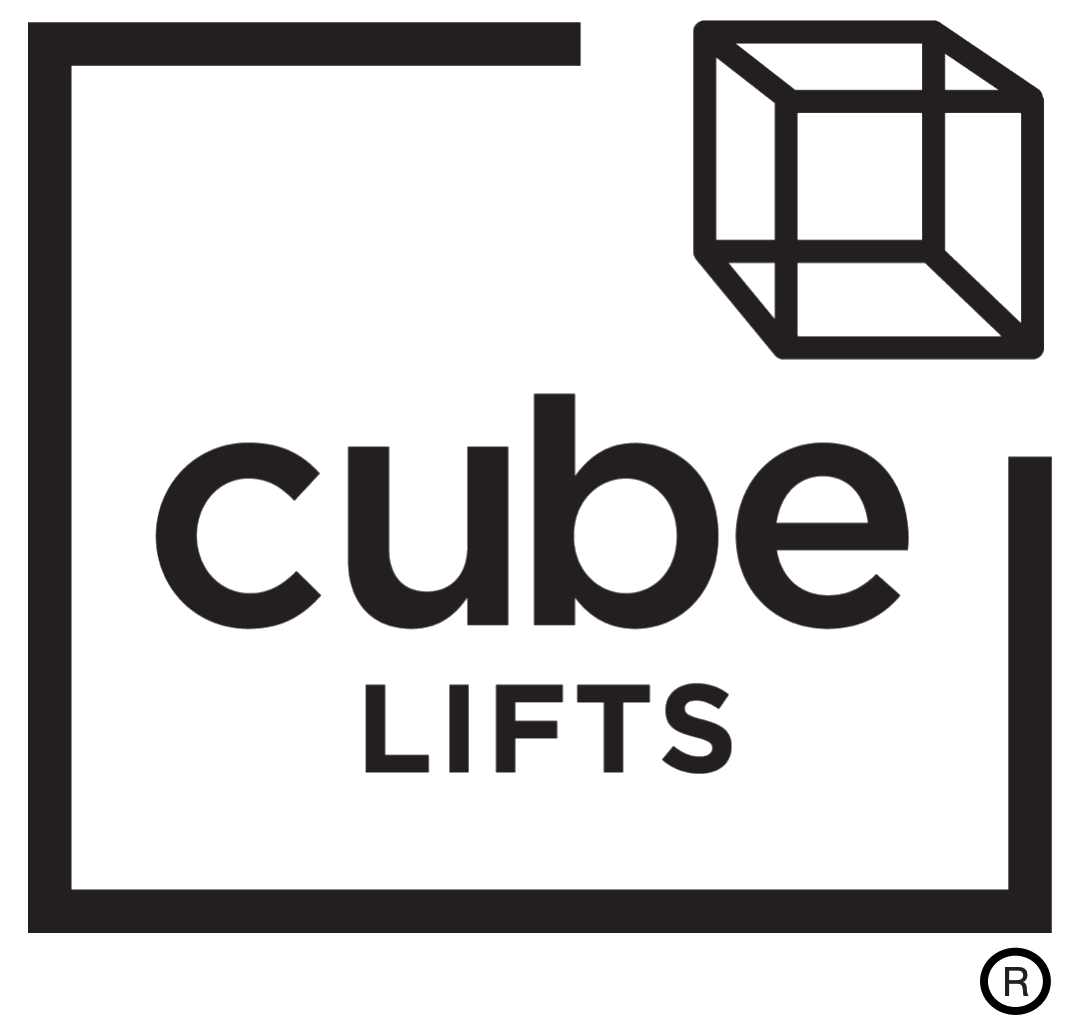A home elevator is the ideal solution for adding more convenience and ease to your multi-level home. Installation costs depend on the elevator type, amount of installation, and home construction.
While it may be a huge investment, the benefits of a home elevator will outweigh the initial expense over the long run, as it allows you to be more mobile, sell your home at a higher value, and make your family feel more at ease. Owners who want to upgrade must know exactly what drives the overall cost.
We’ve designed this home elevator cost comparison blog to help you understand everything before you buy your home elevator.
Home Elevator Cost Comparison: Financial Considerations for Installing a Home Elevator
A home elevator purchase can give more comfort and accessibility at home, but there are costs that homeowners need to consider. There are typically a number of things that impact the price of an elevator installation in your house such as what type of elevator you’re after, the size of the job, the type of structure, and so much more.
Home elevators usually range in price depending on several factors. This cost varies depending on the type, size, build, and materials of the elevator.
Home elevators come in hydraulic, traction, pneumatic, and screw-driven versions. All come in different price ranges, with the heaviest-loading hydraulic elevators being more costly, while smaller and easier-to-install pneumatic elevators can be more economical.
Along with the elevator unit itself, installation is another expense. The installation process can be more or less complex depending on how the house is constructed. If the house isn’t supplied with a shaft or room for an elevator, significant remodelling or structural modifications may be required.
This may involve constructing a shaft, fortifying floors, or adding electrical wiring, all of which increase installation costs. There are also ongoing expenses to think about, like repairs and power bills. Depending on the technology, elevators should be maintained at regular intervals to make sure that they work properly and are safe, which often means yearly maintenance, oiling, and mechanical repairs.
Costs to maintain will vary, depending on the technology and the amount of time you use it. Additionally, electrical usage and its percentage will vary depending on the kind of elevator technology chosen and how frequently the lift is used. Hydraulic lifts, for instance, use more energy than pneumatic or traction elevators.
Elevator upgrades and customizations are other factors that can impact the cost of your home elevator. Homeowners might add finishes, door designs, or custom controls to complement their home’s decor. Upgrades like integrating your elevator with Solar Panels can require additional labor which adds expenses. While customized for your desires and needs, these modifications can add to the elevator’s cost, extend delivery time and increase the cost for installation. Speak with your local distributor to verify the costs of any desired options or customizations.
Another factor homeowners must consider is how they intend to fund the cost of a home elevator. If the financial resources aren’t immediately available, homeowners can look into home equity loans, personal loans, or even specific financing programs that are suggested by the elevator manufacturers. Contact the manufacturer of your desired home elevator to review what options you have available for financing your residential elevator.
The Impact of Home Elevators on Property Value
Depending on your location and the layout of your property, purchasing a home elevator is an investment worth considering. While installing an elevator can make a home more beautiful and accessible, particularly if it’s constructed in multiple stories, it’s not always as obvious how it positively impacts a home’s price and value.
First, having a home elevator can appeal to an older demographic who are seeking to purchase a home, increasing the pool of prospective buyers. In addition, it can attract individuals with a disability, or someone who may need future accessibility assistance. Elevators are much easier to navigate than stairs, and far more attractive than stair chairs. Not only are residential elevators a beautiful addition, but they make homes more accessible for everyone, regardless of age and physical abilities. This can expand the number of buyers available, especially in areas with older residents or where demand for homes that fit a broad spectrum of lifestyles.
In these situations, a home elevator is a desirable addition, making the house potentially more valuable or easier to sell in the future. This is why architects, developers and real estate agents worldwide are incorporating home lifts into their projects and designs. Furthermore, in high-end property markets, elevators tend to be seen as a sign of class and modernity. They also attract an older clientele who often seek to purchase a home that offers comfort and ease.
As a result, the benefits of installing a home elevator could be substantial, making the residence more valuable for both new construction and resale markets than similar homes that lack an elevator.
Home Elevator Cost Comparison: An Investment in Comfort and Convenience
With a home elevator, we need to know how much it will cost for those homeowners who see the purchase as an investment in convenience and ease. Depending on the kind of home elevator you get, its ease of installation, extra amenities or options, a home elevator might run considerably more or less the same.
A home elevator is viewed as a comfortable upgrade for a home’s accessibility, especially in a multi-story, single family home. It may sound like a big expense at first but think about the long-term value. You’ll get better access, higher value of your property, and receive more accessibility within your home.
Pneumatic elevators offer the best of both worlds, comfort and convenience. As opposed to conventional elevators with a variety of complex mechanical features and long shafts, pneumatic elevators compress air to raise and lower the cabin with minimal energy consumption. Resting on the existing ground floor, the self-supporting design of these air-driven elevators mean they can be installed quickly and with fewer construction requirements. These features make them ideal for homeowners looking to optimize space or those retrofitting into an existing residence.
A traction elevator is driven by cables and counterweights. Traction elevators are often selected for higher-rise or high-efficiency residences. While typically cheaper than hydraulic elevators, additional installation costs must be factored.
Pneumatic elevators are more affordable for most homeowners. These elevators operate on the concept of air pressure, thus being perfect for any single family residence. They’re often less intrusive as they don’t need a machine room or pit to install them, and are perfect for retrofitting existing homes.
They are generally lighter in weight and travel shorter distances than hydraulic or traction elevators. Other alternatives such as screw-driven elevators, provide a tradeoff between cost and efficiency. Screw-driven elevators are another option and work by utilizing a screw to propel the elevator car.
They tend to be used in small homes because they don’t need a machine room and can easily be built into preexisting structures. Yet, perhaps not with the same ease and efficiency as a pneumatic elevator.
Customization and other features also add to the price of the elevator. Owners can opt to customize the interior features like the floors, lighting, or doors based on the home’s style and design. These tweaks add up in price, depending on what you decide.
Overall, by purchasing a home elevator you’re investing in comfort and convenience. The total price range is based on the technology of an elevator, the total cost of installation, numbers of stops and customization. Homeowners will have to weigh the upfront expense versus the long-term benefits of increased living space, home value, and freedom to shift around the house.
Home Elevator Cost: FAQ
Home elevator costs depend highly on the elevator technology, model purchased, number of stops and installation complexity. Given every home elevator is customized for each home, an onsite consultation or review of architecture drawings is often required to calculate an exact cost.
Some variables affect the cost of a home elevator, including elevator type (hydraulic, traction, pneumatic or screw driven), elevator size, number of floors to serve, installation complexity (e.g., if the house needs structural changes), customization (interior finishes), and materials.
The installation costs for a home elevator can vary depending on the type of elevator and the complexity of the install. Most home elevators must be purchased by a licensed authorized distributor who includes installation within their proposal. If structural repairs are required (e.g., constructing a shaft or bracing floors), this can increase costs. Depending on the market, permits may also be required.
Yes, most elevators need regular servicing and checking to ensure that they run safely and smoothly. Pneumatic elevators do not operate using any oils, gases or lubricants so less maintenance is often required. Speak with the elevator manufacturer to verify the maintenance required for your desired elevator.
The most affordable elevators on the market are pneumatic elevators. These systems rely on air pressure to lift the car on an elevator, making them more suitable for smaller homes and less structurally involved. They also save costs on construction as no shaft, pit or machine room is required.
Depending on the market and type of property, how much a home elevator will increase the price of the house can vary greatly. A home elevator is a great way to make a house seem more appealing to more prospective buyers, particularly in luxury areas or in a neighbourhood with an older population. Yet in smaller homes or markets where elevators aren’t a common feature, this extra premium might not matter so much.
